Soft-Geometry's San Francisco studio provides the perfect place to work, rest and play
Indian-American design duo Soft-Geometry keeps shop, and house, in a converted San Francisco warehouse where they developed the Molecule collection, launching at New York Design Week 2024

For life and creative partners Palaash Chaudhary and Utharaa Zacharias, the force behind Soft-Geometry (who appeared in the USA 300 list), a career-defining quest to infuse objects with ‘softness’ is as much a reflection of cross-cultural influence as it is place. Splitting time between their native India and adoptive United States, the duo live and work in a converted 1920s warehouse in San Francisco’s SoMa neighbourhood.
‘The studio is part of our home, so we have to be soft with how we treat it,’ says Zacharias. ‘And our home is part of the studio, so we can’t be too precious about it either. We have a photo by German artist Ole Witt of an Indian lawyer who set up his office on a scooter, and I think our space embodies that spirit. It’s a reminder of how much you can do with a little.’
Tour Soft-Geometry's San Francisco studio
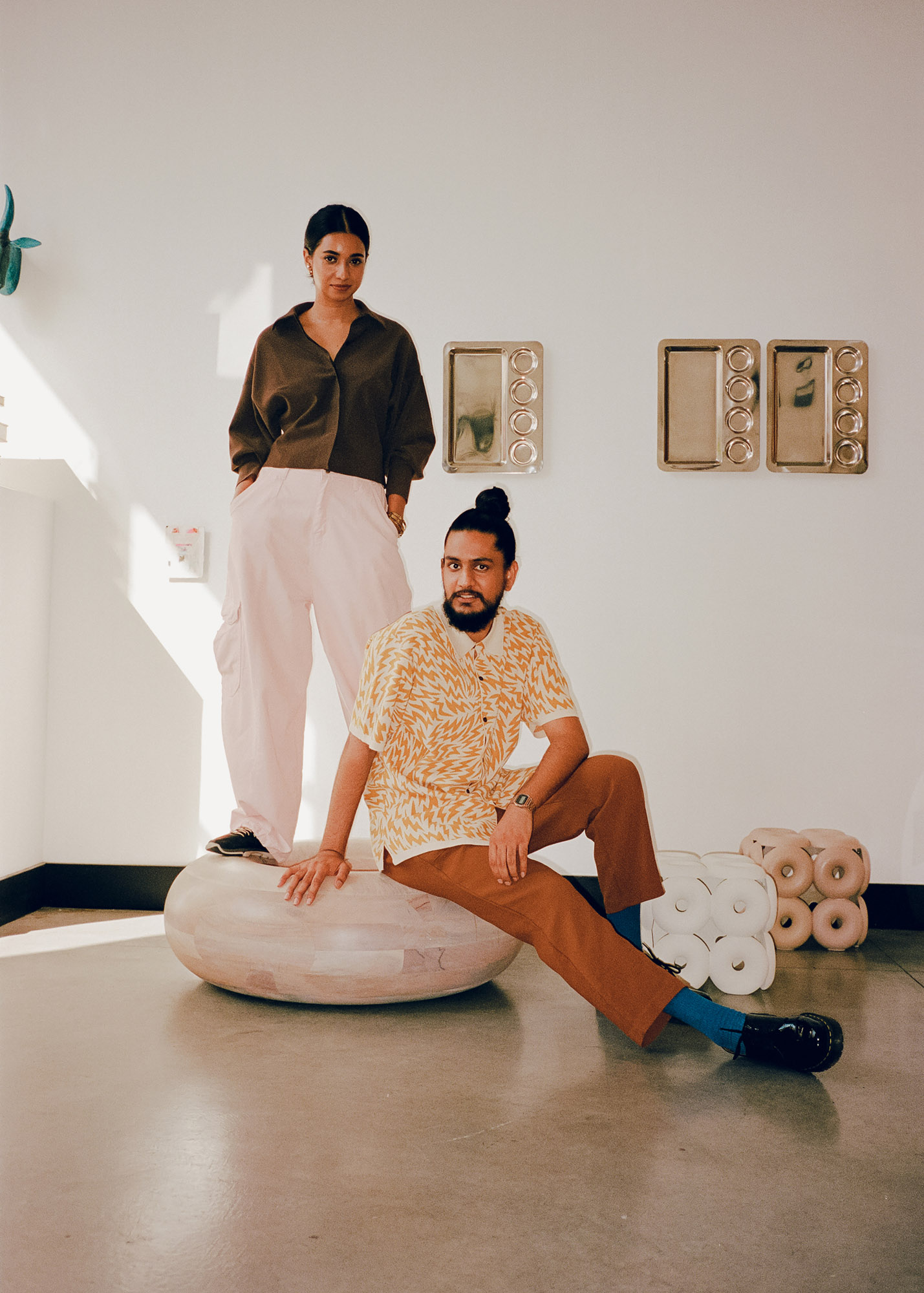
Utharaa Zacharias and Palaash Chaudhary in their San Francisco studio
Because of this spatial dynamic, there’s flexibility not only in experimenting with the shape and material properties of a new concept, but also in getting a sense of how these designs can be lived with. Having set up shop here two and half years ago, Chaudhary and Zacharias have developed collections such as the ‘Elio’ lamp and ‘Donut’ table.
At this year’s New York Design Week, the studio launches ‘Molecule’, a modular element with both solid and transparent characteristics that can be used as a support or function as a standalone object. The design was inspired by the practice of handmaking the intricately-patterned Athangudi tiles that have clad homes in the south Indian region of Chettinad for more than a century. Each ‘Molecule’ component is cast in resin and moulded by hand to form mortise and tenon joints. As with many of Soft-Geometry’s undertakings, there’s an intriguing tension between the use of contemporary industrial processes and age-old craft traditions.
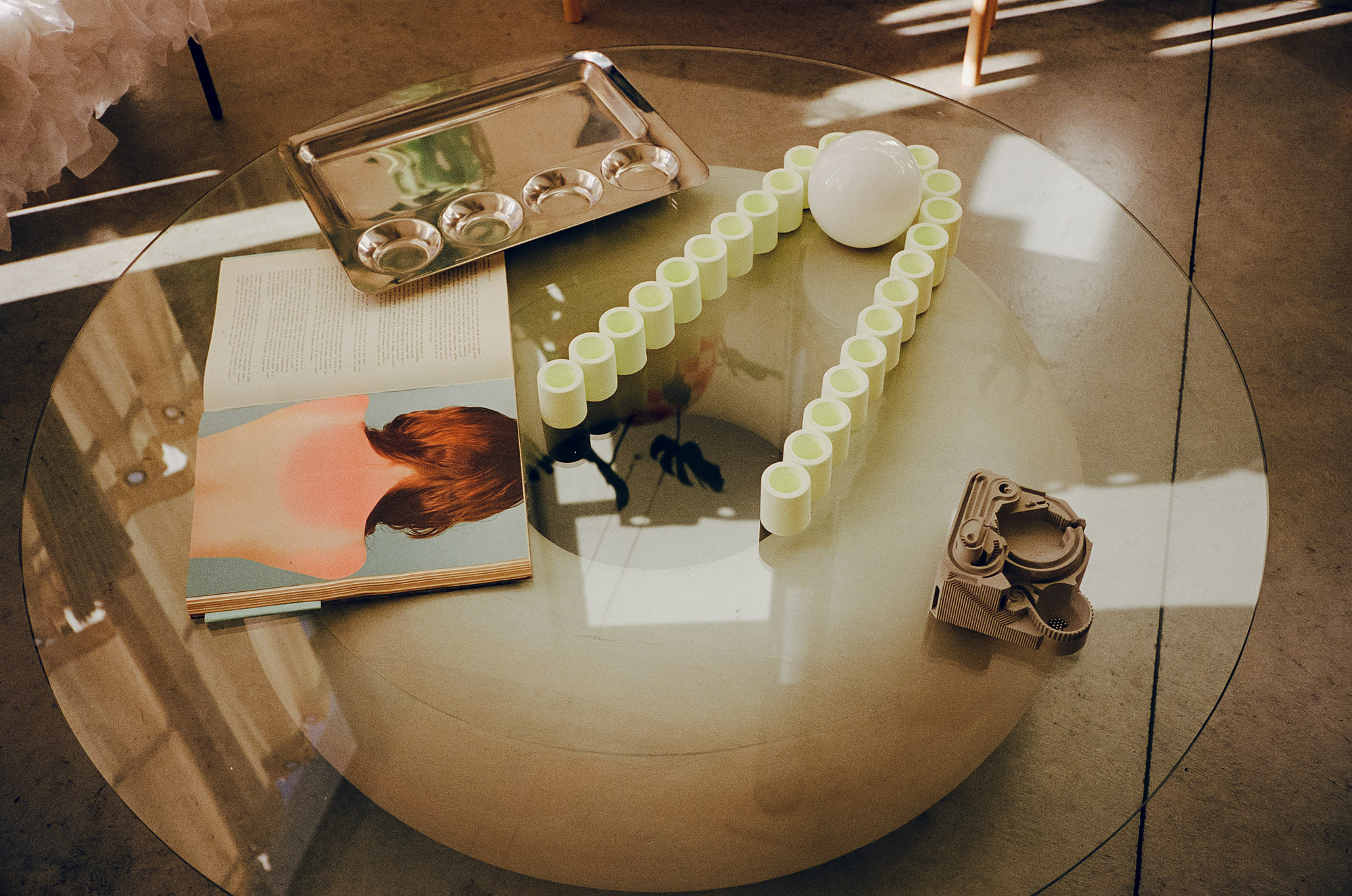
Soft-Geometry’s ‘Donut’ table and ‘Mirrors for Aliens’ mirror, alongside books, materials and prototypes
‘Over the last nine months, our space has served as the testing ground for this delicate and complex process, guided as much by intuition as the technique that constructs them,’ says Chaudhary. ‘It feels as though our studio has once again expanded and transformed to make way for this collection. Each unit has been cast, lined up, assembled and clamped one by one slowly over the months. It has been rewarding to see our studio slowly be inhabited with the colourful architecture of ‘Molecule’, reminiscent of those in our hometowns.’ While he hails from Ghaziabad, just outside New Delhi, Zacharias is from Kochi.

One of the space’s best attributes is its large double-height windows that flood the interior with sunlight. ‘Golden light comes in during the evening and makes everything feel beautiful,’ says Zacharias. ‘It really begs for us to be creating. The window’s shadow moving along the wall has predictably become our favourite shoot backdrop.’
Along with zones with workbenches, supply storage and a packaging corner, the space also transforms into a photography studio from time to time. The lower levelis loosely organised as a workshop that changes based on the task at hand, and most of the furniture and equipment has been retrofitted with wheels so that the duo can quickly turn the studio into a dining room or entertainment space for games nights with friends. ‘The floors are concrete and can take it,’ adds Zacharias.

An ‘Elio’ lamp, by Soft-Geometry, alongside a ‘Cesca’ chair by Marcel Breuer, in a corner of the studio
Photography: Soft-Geometry
Meanwhile, the upper floor is allocated as the duo’s bedroom. Though mostly untouched by the activity below, even this room is sometimes used for photo shoots. ‘It’s our favourite spot to photograph a bird’s-eye view of the studio,’ says Zacharias.
Receive our daily digest of inspiration, escapism and design stories from around the world direct to your inbox.
The benefit of operating in a live-work space – especially when one builds furniture and objects for the home – is that they get to live with what they produce. Scattered among the prototypes and material samples are items that the pair have collected over the years, including red fibreglass armchairs designed by Vico Magistretti for Artemide and glassware by Agustina Bottoni.
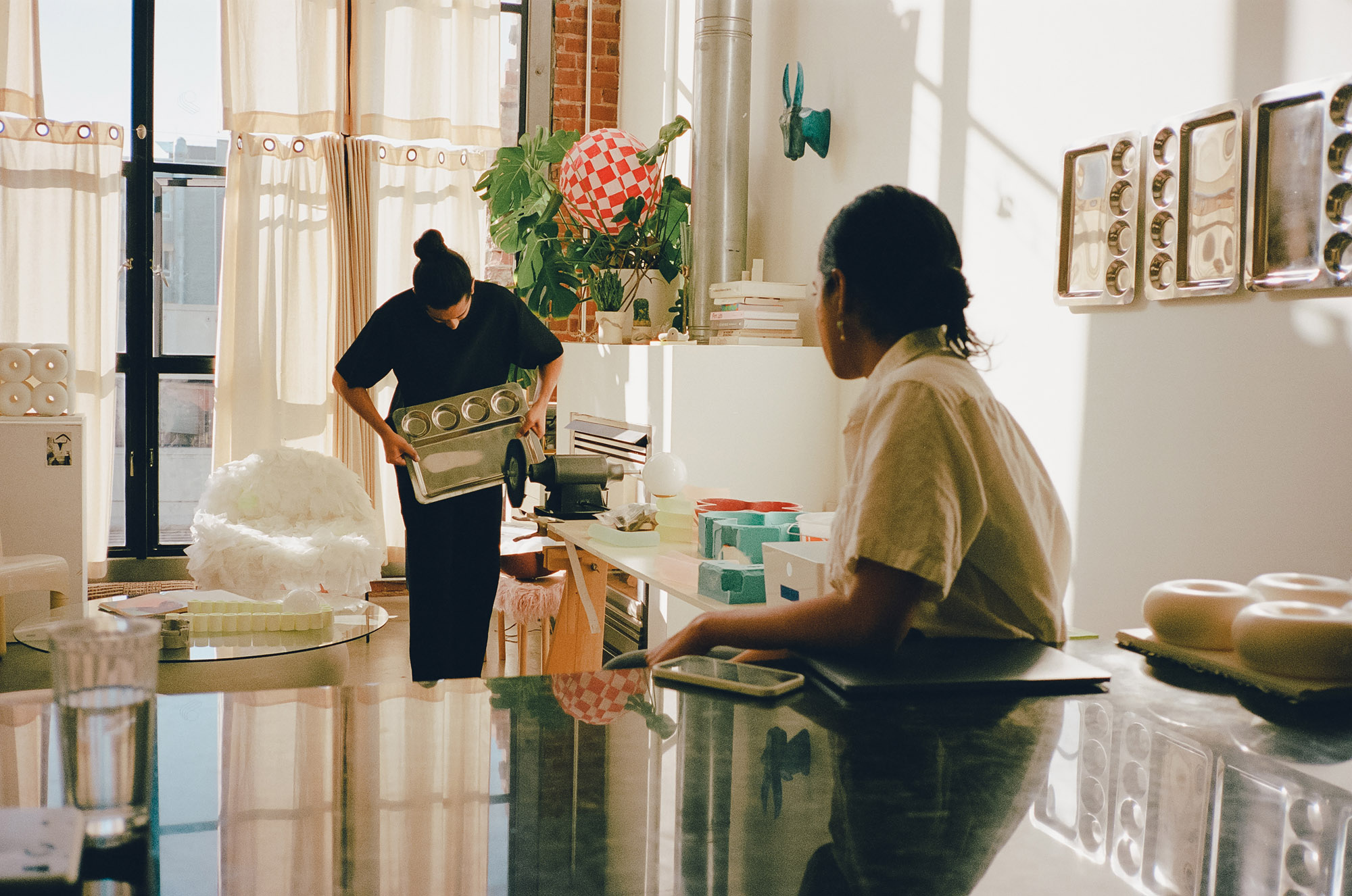
‘Our practice is rooted in softness and the sentimentality of objects,’ says Chaudhary. The duo aim to stretch the limits of what everyday objects can do. ‘It can be poetic, sometimes chaotic, and deeply personal.’
This approach was put to the test last year when they had to go through the arduous process of gaining green cards to become US residents. A set of scratched-up steel thali plates, originally sourced in India, and their determination to revive them in a new way, provided them with a sense of catharsis. ‘Every day, emotionally drained from writing pages and pages for the application, we would sand these plates for hours, then check if we could see our reflections,’ says Zacharias. ‘It gave us a way to reflect on our Indianness, our alienness, and the impermanence that comes with living on visas.’
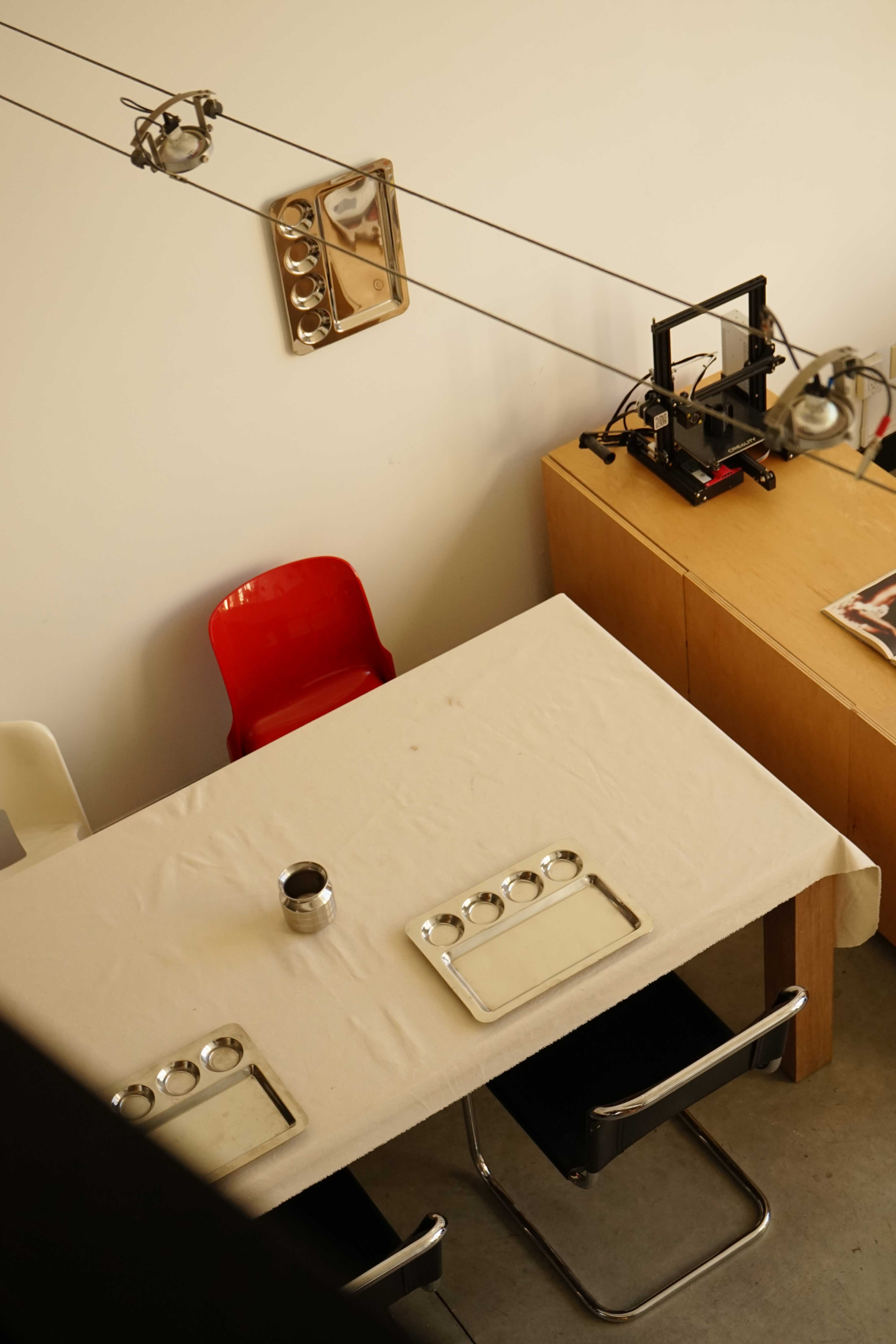
The resulting ‘Mirrors for Aliens’ series was exhibited at NYCxDesign 2023, garnering a lot of attention. The designs will also be shown by gallery Superhouse during New York Design Week 2024, and the prototype was recently acquiredby the San Francisco Museum of Modern Art (SFMoMA). ‘It all feels very full circle, and would have been impossible without everything this space has transformedinto for us,’ concludes Zacharias.

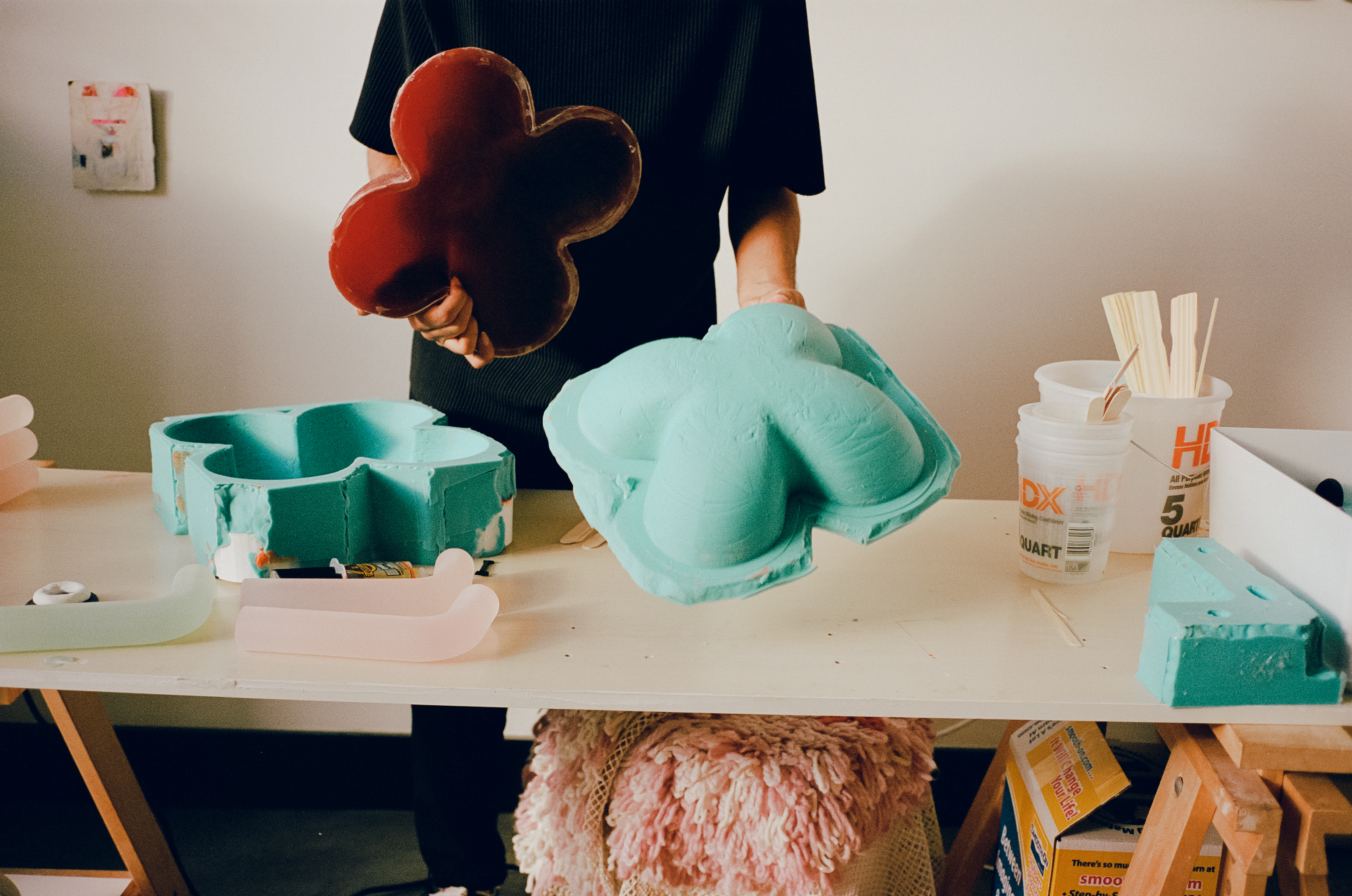
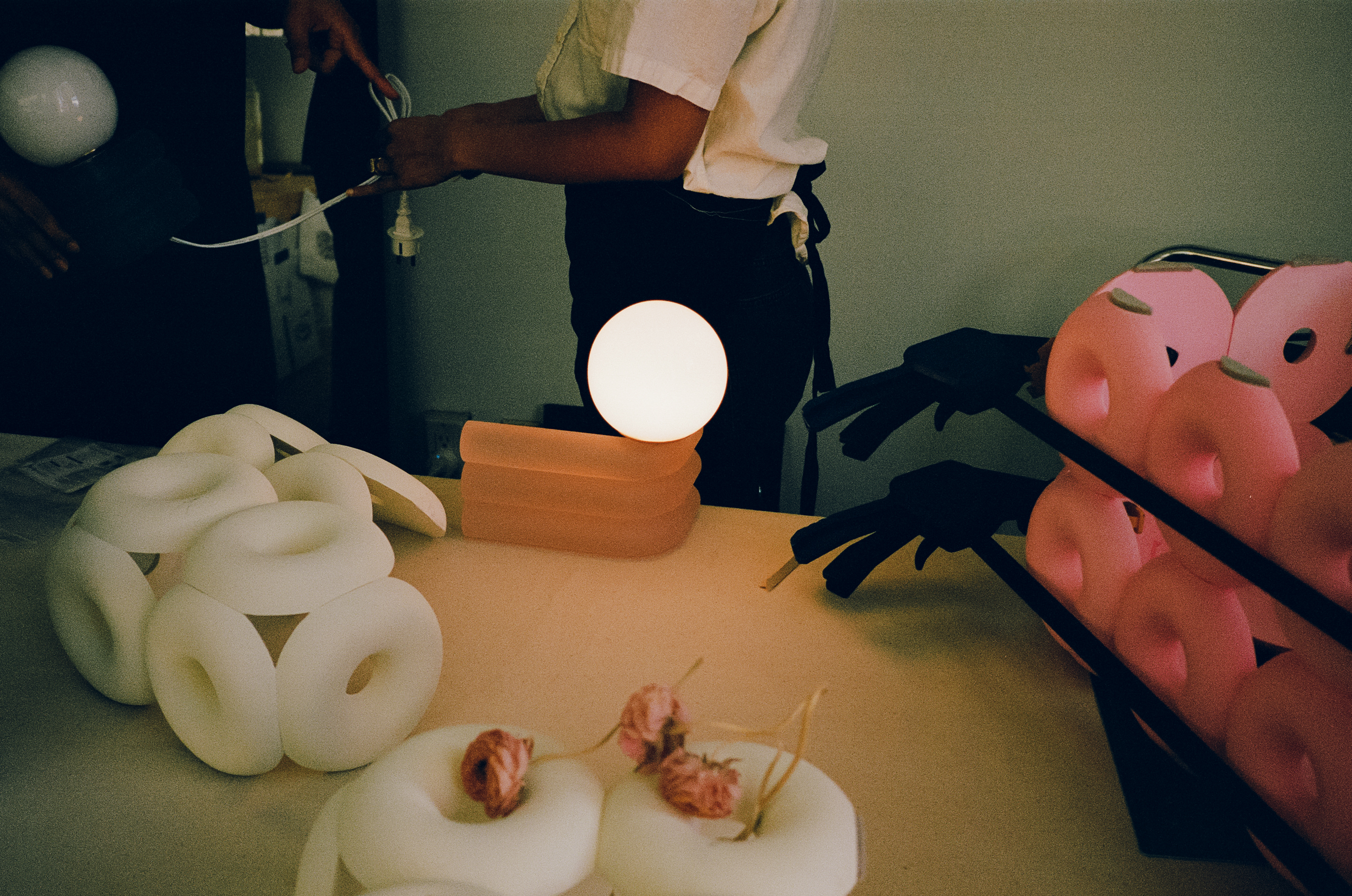
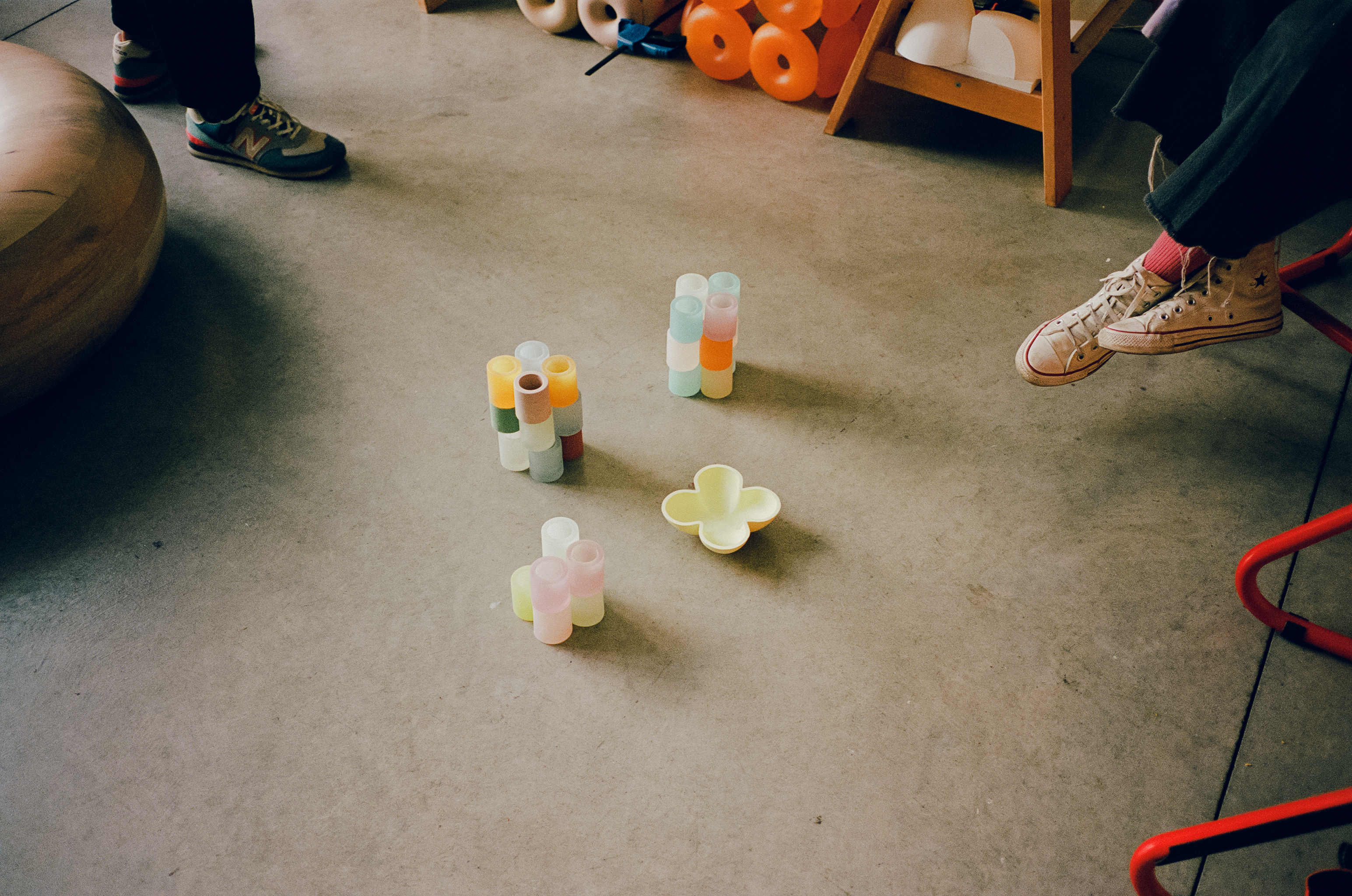
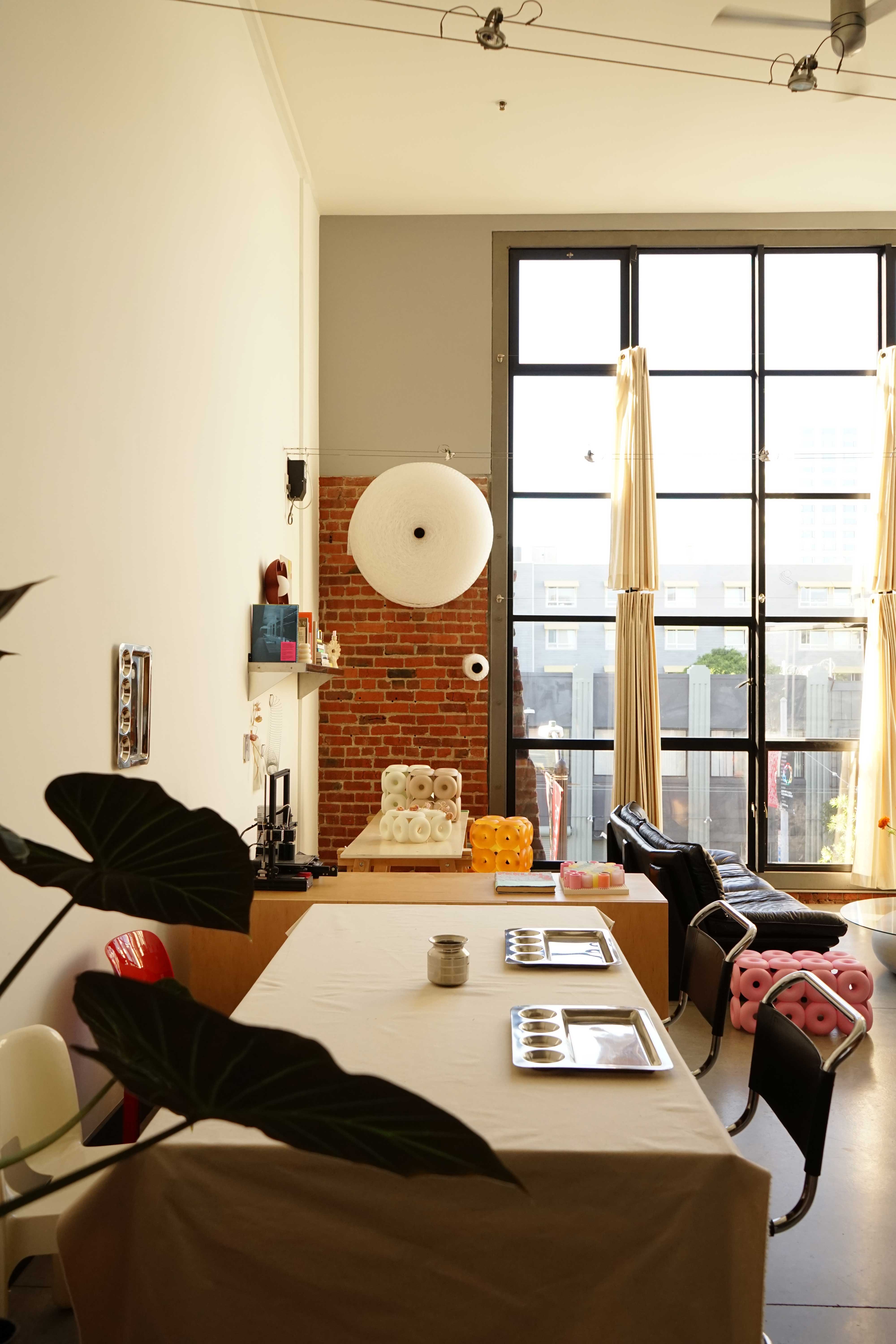
Adrian Madlener is a Brussels-born, New York-based writer, curator, consultant, and artist. Over the past ten years, he’s held editorial positions at The Architect’s Newspaper, TLmag, and Frame magazine, while also contributing to publications such as Architectural Digest, Artnet News, Cultured, Domus, Dwell, Hypebeast, Galerie, and Metropolis. In 2023, He helped write the Vincenzo De Cotiis: Interiors monograph. With degrees from the Design Academy Eindhoven and Parsons School of Design, Adrian is particularly focused on topics that exemplify the best in craft-led experimentation and sustainability.
-
 Taiwan’s new ‘museumbrary’ is a paradigm-shifting, cube-shaped cultural hub
Taiwan’s new ‘museumbrary’ is a paradigm-shifting, cube-shaped cultural hubPart museum, part library, the SANAA-designed Taichung Green Museumbrary contains a world of sweeping curves and flowing possibilities, immersed in a natural setting
-
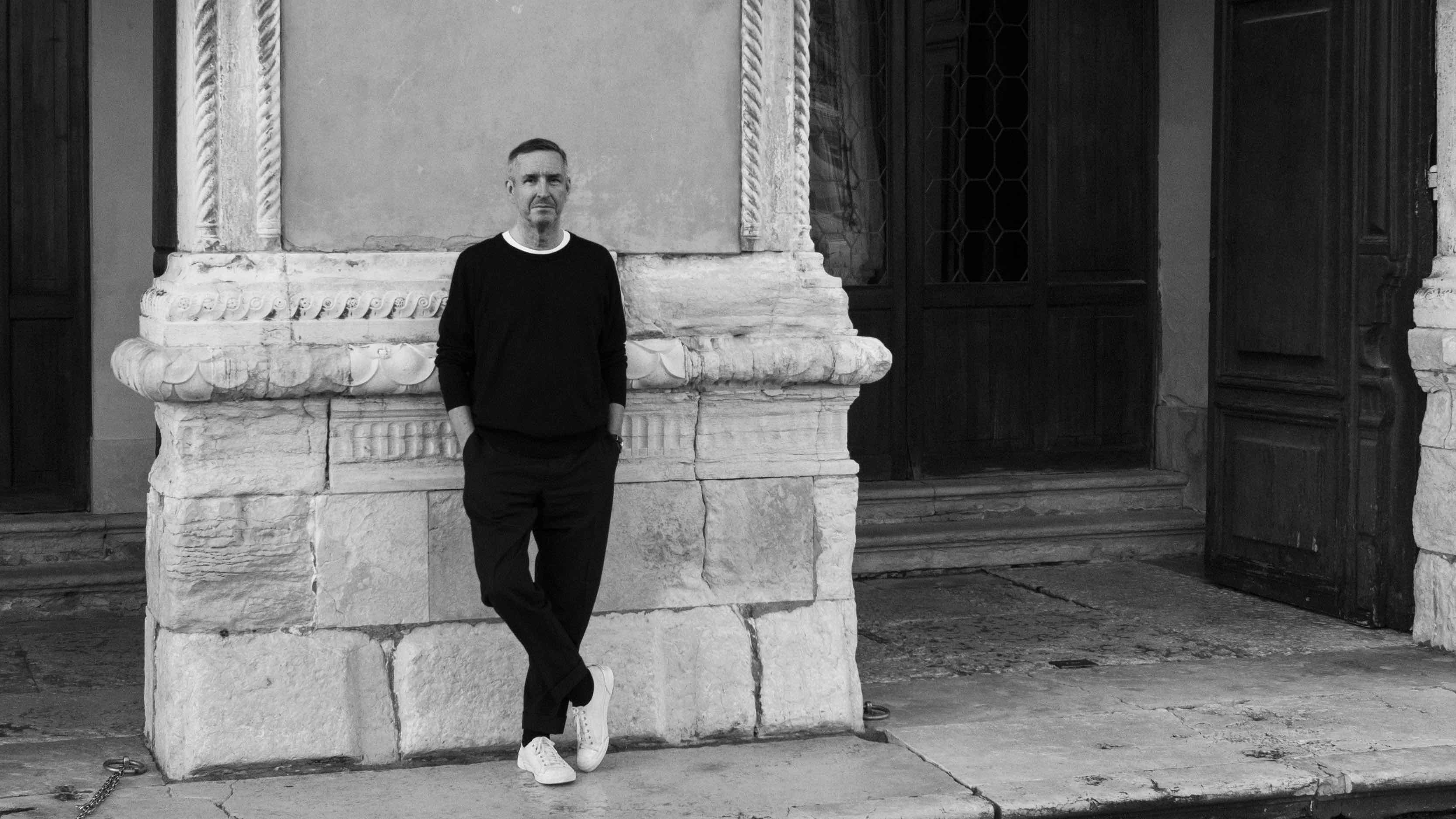 Dries van Noten on why he's building a new home for craft in Venice
Dries van Noten on why he's building a new home for craft in VeniceA year after departing the runway, Dries van Noten unveils his next chapter: the Fondazione Dries Van Noten, a newly announced cultural initiative in Venice celebrating craft in all its forms. Wallpaper meets the designer to find out why he’s not ready to retire.
-
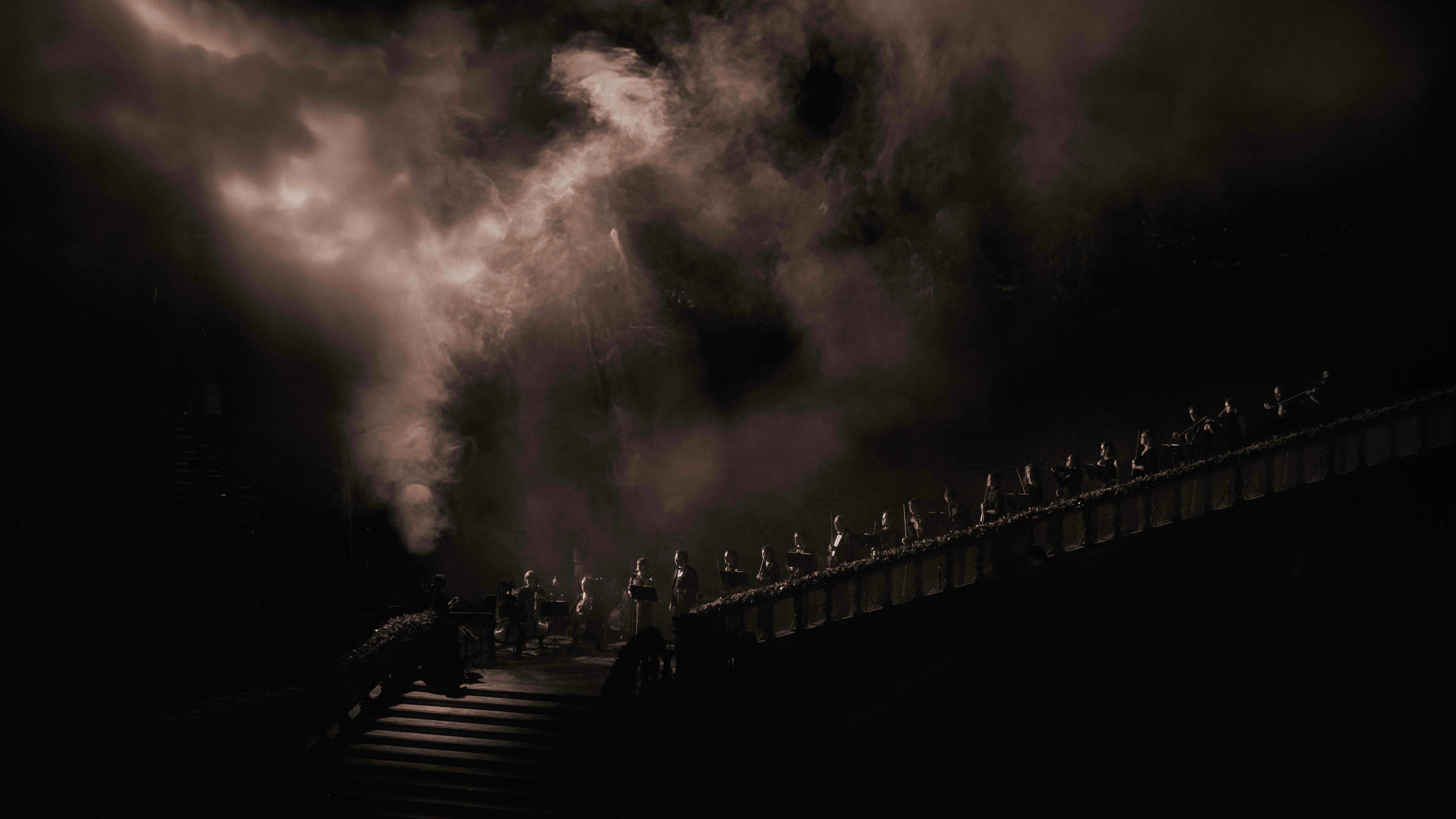 Alexander Wessely turns the Nobel Prize ceremony into a live artwork
Alexander Wessely turns the Nobel Prize ceremony into a live artworkFor the first time, the Nobel Prize banquet has been reimagined as a live artwork. Swedish-Greek artist and scenographer Alexander Wessely speaks to Wallpaper* about creating a three-act meditation on light inside Stockholm City Hall
-
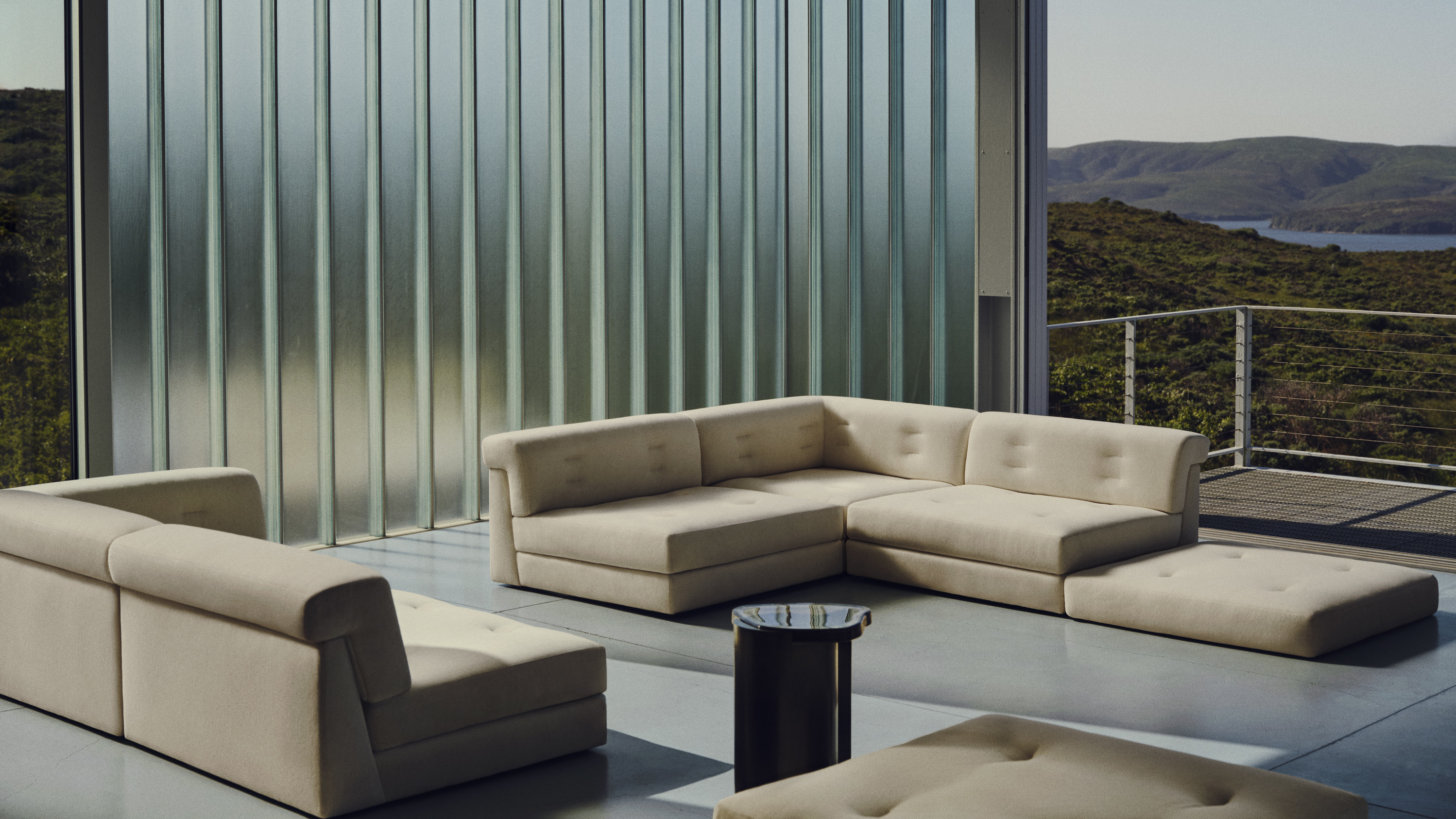 New furniture from Maiden Home elevates elemental materials through unique design
New furniture from Maiden Home elevates elemental materials through unique designFinely crafted and exquisitely formed, the New York furniture brand’s latest designs find their perfect showcase at a modernist Californian home
-
 Wallpaper* USA 400: The people shaping Creative America in 2025
Wallpaper* USA 400: The people shaping Creative America in 2025Our annual look at the talents defining the country’s creative landscape right now
-
 Workstead's lanterns combine the richness of silk with a warm glow
Workstead's lanterns combine the richness of silk with a warm glowAn otherworldly lamp collection, the Lantern series by Workstead features raw silk shades and nostalgic silhouettes in three designs
-
 Can creativity survive in the United States?
Can creativity survive in the United States?We asked three design powerhouses to weigh in on this political moment
-
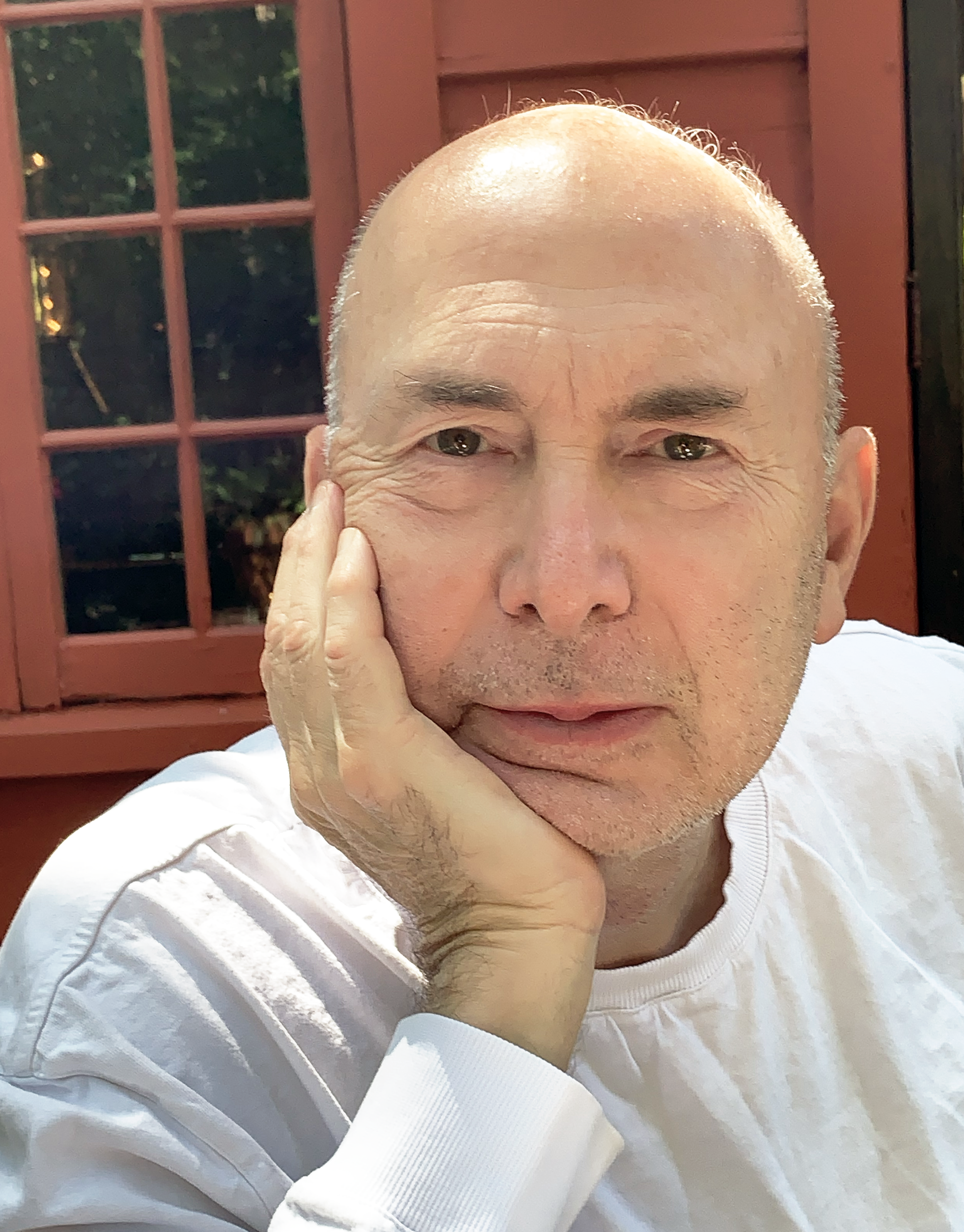 Murray Moss: 'We must stop the erosion of our 250-year-old American culture'
Murray Moss: 'We must stop the erosion of our 250-year-old American culture'Murray Moss, the founder of design gallery Moss and consultancy Moss Bureau, warns of cultural trauma in an authoritarian state
-
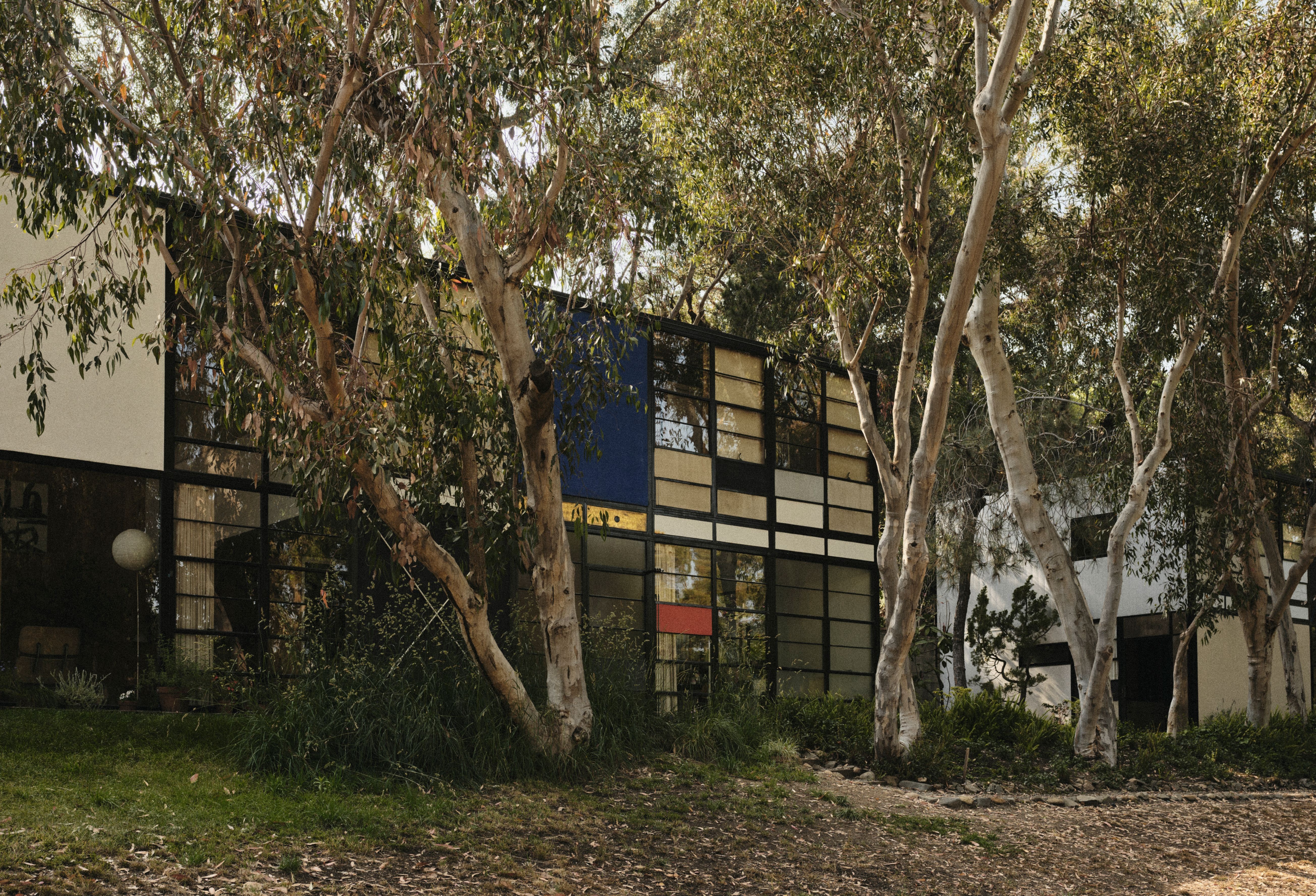 ‘You can feel their presence’: step inside the Eameses’ Pacific Palisades residence
‘You can feel their presence’: step inside the Eameses’ Pacific Palisades residenceCharles and Ray Eames’ descendants are exploring new ways to preserve the designers’ legacy, as the couple’s masterpiece Pacific Palisades residence reopens following the recent LA fires
-
 2025’s Wallpaper* US issue is on sale now, celebrating creative spirit in turbulent times
2025’s Wallpaper* US issue is on sale now, celebrating creative spirit in turbulent timesFrom a glitterball stilt suit to the Eames House, contemporary design to a century-old cocktail glass – the August 2025 US issue of Wallpaper* honours creativity that shines and endures. On newsstands now
-
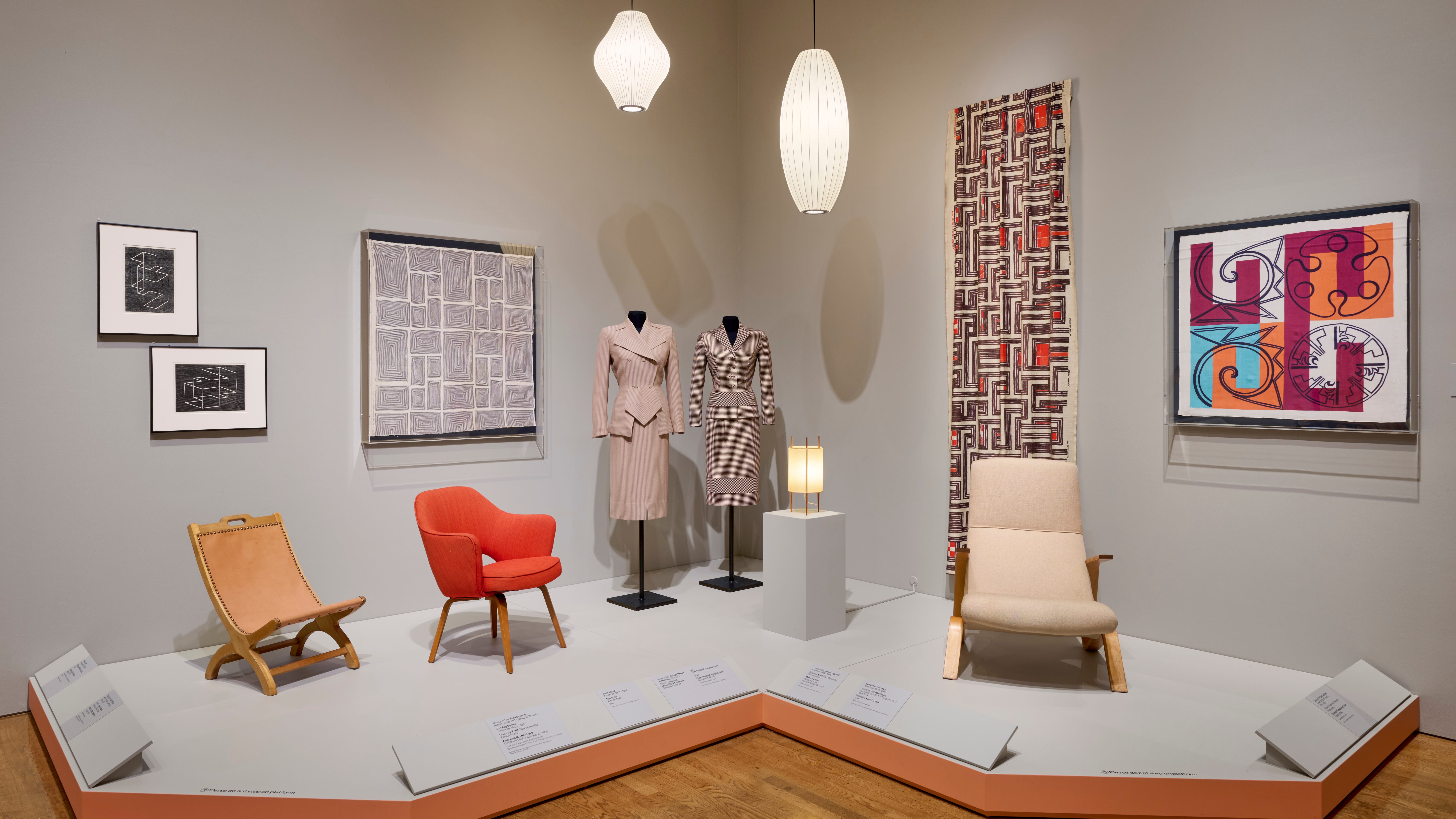 ‘Boom: Art and Design in the 1940s’ explores the creative resilience of the decade
‘Boom: Art and Design in the 1940s’ explores the creative resilience of the decadeNoguchi and Nakashima are among those who found expression and innovation in the adversity of the 1940s; take a walk through the Philadelphia Museum of Art exhibition